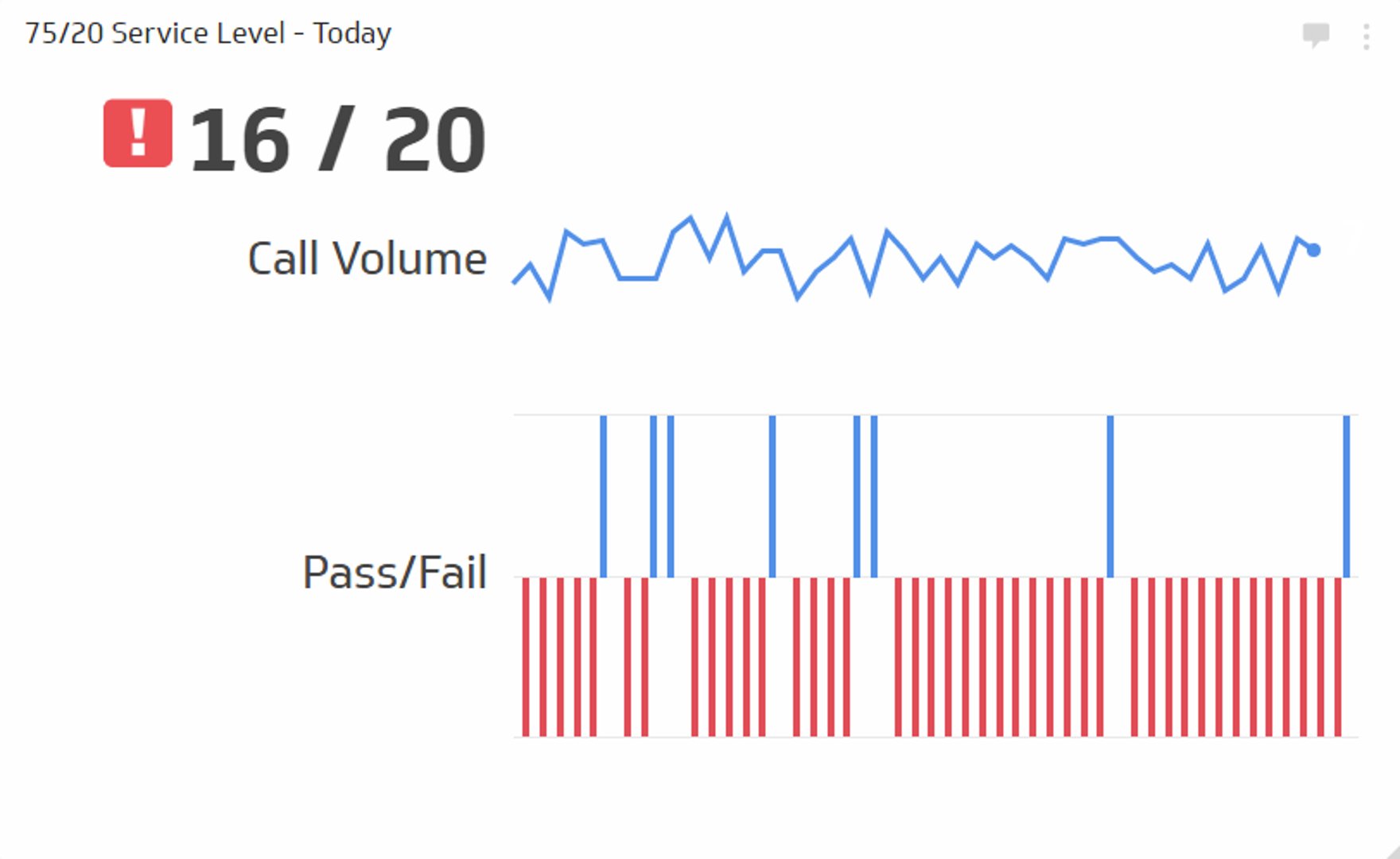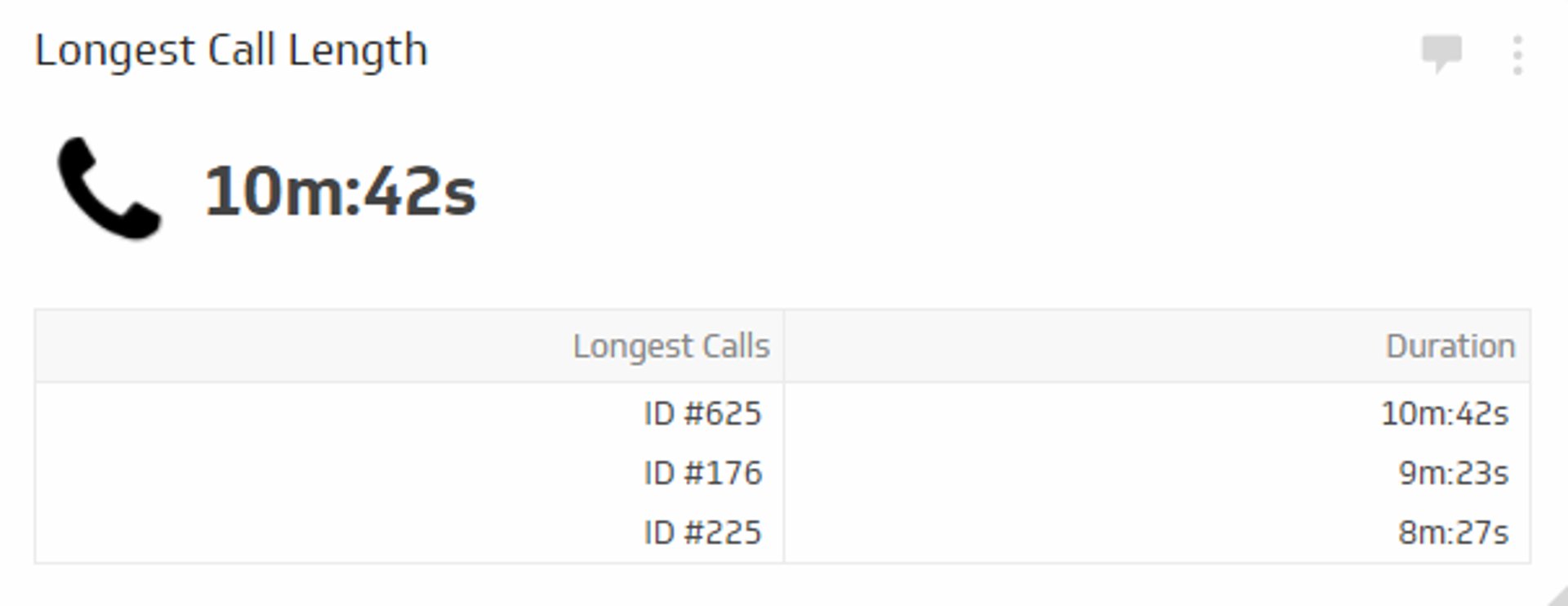Service Level
Measure your ability to deliver on commitments made in your service level agreements (SLAs).
Track all your Call Center KPIs in one place
Sign up for free and start making decisions for your business with confidence.

What is a Service Level?
Service Level is a performance metric that measures the quality and efficiency of a call center's customer service. It refers to the percentage of calls answered within a specified time frame, usually expressed as "X% of calls answered within Y seconds."
For example, a service level of "80% of calls answered within 20 seconds" means that 80% of the incoming calls must be answered by an agent within 20 seconds.
An SLA is your call center's promise of maintaining a certain standard of service to your clients and customers, and, typically speaking, the SLA will specify that your call center is committed to answering a set percentage of calls within a certain number of seconds, such as answering 75% of calls within 20 seconds.
It's important to monitor service levels in real-time, as it provides an active barometer of your call center's current performance. If the service level is fluctuating, you need to know about it immediately in order to solve the problem. Service level may be influenced by a range of issues, such as unexpectedly high call volume, unplanned service outages, or high agent absenteeism.
Key terms
- Service level: The performance of a system compared to predefined goals using metrics such as seconds to answer, handle time, and service up/downtime.
- Service-level agreement: A contract where service providers commit to delivering a set standard of service to clients and/or customers.
Success indicators
- Consistently delivering services that meet or exceed the expectations set out in the SLA.
What is a Sales Level Agreement (SLA)?
In a call center setting, an SLA (Service Level Agreement) is a formal agreement between a service provider and a client that outlines the expected level of service, performance metrics, and response times. It sets standards for call center operations and ensures consistent service delivery.
Best Practices for Creating an SLA for Your Call Center Based on Our Experience
An effective SLA is vital for delivering exceptional customer support in a call center environment. By setting clear objectives, defining performance metrics, establishing response timeframes, communicating expectations, monitoring performance, and fostering a collaborative relationship with clients, you can create an SLA that drives call center success and customer satisfaction.
Define clear objectives:
- From our experience, it's crucial to establish goals and objectives for your SLA that align with your organization's overall customer support strategy.
- Make sure your objectives are measurable, achievable, and relevant to your call center's needs
Set performance metrics and targets:
- We suggest selecting appropriate performance metrics (e.g., Average Speed of Answer, First Call Resolution, Call Abandonment Rate) to track and evaluate your call center's performance
- Set realistic targets for each metric based on industry benchmarks and your call center's capabilities
Establish response and resolution timeframes:
- We've found that defining expected response times for different types of customer inquiries, considering factors such as complexity and urgency is important
- Set clear timeframes for resolving customer issues, focusing on minimizing customer effort
Communicate SLA expectations to your team:
- In our view, it's vital to ensure that your call center agents understand the SLA's objectives, performance metrics, and their responsibilities in achieving them
- Offer regular training and support to help your team meet SLA targets
Monitor and review performance:
- We recommend regularly tracking your call center's performance against the established SLA metrics
- Analyze performance data to identify trends, areas for improvement, and opportunities for optimization
Foster a collaborative relationship with clients:
- Engaging in open communication with your clients ensures that SLA expectations are clear and mutually agreed upon
- Review and update the SLA periodically to adapt to evolving client needs and business objectives
Monitoring Call Center KPIs on a Dashboard
Once you have established benchmarks and targets for Service Level, you’ll want to establish processes for monitoring this and other call center KPIs. Dashboards can be critical in this regard.
Related Metrics & KPIs


